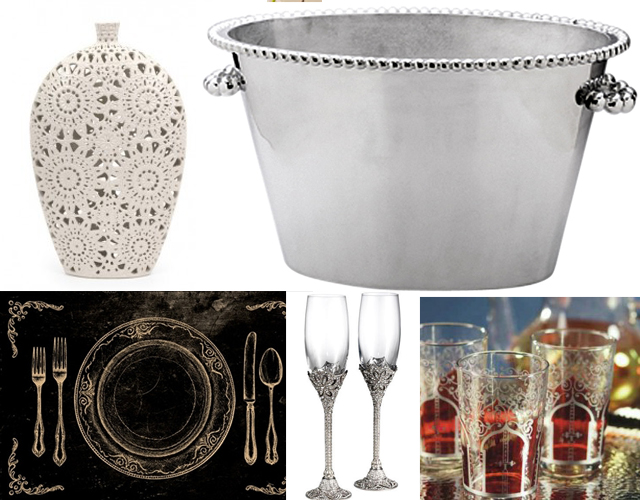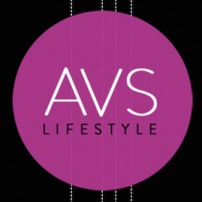
Registering for gifts is indeed the ultimate shopping experience! It’s every girls’ dream to create a list of everything and anything her heart desires for setting up the perfect home for her new life as a Mrs.! It sounds like fun but it is no easy task. There are so many things to consider for both now and the future so whether your upcoming nuptials are months away or next year it’s time to get started! The registry is the acceptable way to let guests know what would prefer and even if they chose not to purchase from the registry it gives them a good sense of your overall style and interests. Registries are also a great way to organize your thoughts and figure out what you need and want and having a list to work from. After the wedding, if all the items were not purchased you’ll know what you still need and most stores often offer a discount for a period of time to buy the remaining items on your list. So here are the basics to get started including a much needed breakdown of what is what when it comes to choosing what’s right for you!
The Basics
TYPES OF CHINA
Earthenware is made of clay fired at low temperatures, making it fairly fragile and quite heavy. Majolica, faience, delftware, and slipware are all varieties of earthenware.
Stoneware is made from fortified clay that is fired at high temperatures, rendering it very hard and sturdy. It is opaque, vitrified (fused like glass), and nonporous, and it’s generally oven- and dishwasher-safe.
Porcelain is composed of kaolin, or china clay, and petuntse, or china stone, making it fine-grained and strong. It is fired at very high temperatures and is vitrified and nonporous.
Bone china is porcelain to which bone ash has been added, giving it greater whiteness and translucency. Fired at high temperatures, bone china is thin, lightweight, and durable.
TYPES OF FLATWARE
Sterling silver pieces are made from silver with the addition of 7.5 percent of another metal, usually copper, for durability. “Sterling” should be stamped on the piece.
Silver plate has a metal-alloy base (usually nickel silver, a mix of nickel, copper, and zinc; sometimes brass) and is coated with a thin layer of 100 percent silver by the process of electroplating. (The term EPNS — electroplate on nickel silver — identifies the base metal.)
Gold plate is made by the same electroplating process, but the base metal (usually sterling silver, a metal alloy, or stainless steel) is coated with a thin layer of 10-karat gold.
Stainless steel is an alloy of steel, chromium, and nickel. The highest quality is 18/8; it has a steel base with 18 percent chrome for corrosion resistance and 8 percent nickel for luster.
LINENS
Tablecloths are mostly of linen or cotton (jacquard and damask refer to the weave or finish), and hang down no more than 8 inches on all sides of the table.
Underclothes, toppers, and runners vary widely in size, shape, and material. Before you register, measure your dining table (include height from floor); take the numbers with you.
Napkins range in size from 6 inches square (cocktail napkins) to 20 inches square (luncheon) to 24 inches square (dinner).
Place mats range from 13-by-19 inches to 15 or 16 inches round. Choose a fabric that feels pleasant to the touch.
TYPES OF GLASSWARE
Glass is made from the melting together of sand, ashes, and ground limestone. Though usually translucent and colorless, glass can be tinted in its molten state with metallic oxides or pigments. Traditionally, glass was hand-blown by craftsmen; today it is more often pressed into molds.
Tempered glass has been treated to resist thermal or physical shock.
Crystal is simply glass with the addition of a small amount of red lead oxide, whichlends brilliance and clarity.
Full-lead crystal (also known as lead crystal) is made with 24 percent red lead oxide. Full-lead crystal is often hand-blown, hand cut, and etched or engraved.
KITCHEN BASICS
PREP TOOLS WISH LIST
COOKING GADGET WISH LIST
BAKING TOOLS WISH LIST
OTHER HELPFUL KITCHEN ITEMS
Ready to think outside the kitchen drawer? Consider registering for useful items from the following list: mixing bowls, colander, salad spinner, glass liquid-measuring cups, cutting boards, kitchen scale, box grater, pepper mill, fine sieve, mortar and pestle, funnels, fat separator, flour sifter, nonstick baking mats, cookie-cutter set, pastry-bag set, oven mitts, and pot holders.
COOKWARE
Copper is often considered the ultimate material for cookware. It is an excellent heat conductor. Copper reacts with acidic foods, so many pans are lined with tin or steel. It also tarnishes easily and must be polished regularly.
Stainless steel is durable and easy to clean but does not transmit heat well. Pots with copper or aluminum bases have much better heat distribution.
Aluminum is durable and heats quickly, but if the metal is thin, the pan will warp easily and heat unevenly.
Anodized aluminum is a specially treated aluminum that is harder and denser than normal aluminum. It is lightweight, an excellent heat conductor, and easy to maintain.
Cast iron has excellent heat transmission and is good for cooking at high temperatures. It is exceedingly strong and durable but reacts with acidic foods, is slow to heat, and is very heavy.
Enameled cast iron shares the characteristics of cast iron but is nonreactive. It is recommended for long, slow braising or simmering.
Plain steel, also known as mild steel, rolled steel, or untreated steel, is thin and strong and conducts heat well. It is ideal for woks and crepe pans.
Black, or blue, steel is similar to plain steel, but because it is specially treated, its surface resists corrosion and absorbs heat better.
Enameled steel is also called porcelain enamel. It is light and conducts heat well. The enameled surface has a slight nonstick quality and is nonreactive. The best cookware is made with thick steel, three coats of enamel, and a stainless steel rim to prevent chipping.
Heatproof glass, such as Pyrex, is not a good heat conductor; it is nonreactive with foods, but may chip or crack.
KITCHEN KNIVES
Knife handles should be sealed and seamless, made of wood impregnated with plastic or of molded polypropylene, and firmly riveted or bonded to the tang (the extension of the blade). The tang itself should extend the entire length of the handle.
Knife blades are made from carbon steel (for the sharpest edge) or stainless steel (not so sharp, but easier to care for). Whatever the metal, the blades are forged — hammered out of a thick piece of steel — or stamped — die cut from a sheet of steel.
Cutting edges are flat ground (ground to a taper at point and edge, with a distinctive wedge shape); hollow ground (with a slight concave curve in the sides of the blade — generally less long-lived than flat ground); or serrated (edged with teeth or scallops). Serrated knives hold their cutting edge longer than either flat or hollow ground; however, when they lose the edge, they cannot be sharpened again.
|
|
Added By: | |

|
AVS Lifestyle Wedding Services Somerville, NJ 08876 US |
| View Profile » Contact » | |
